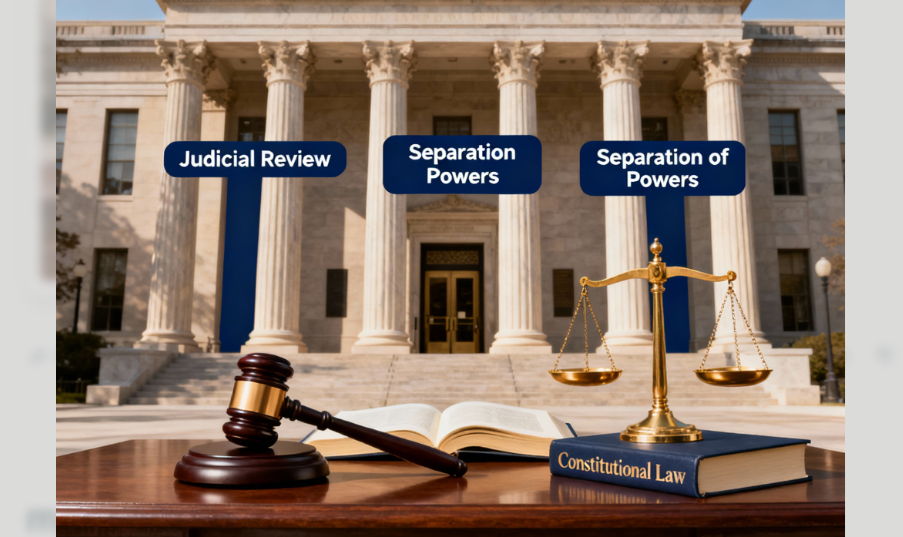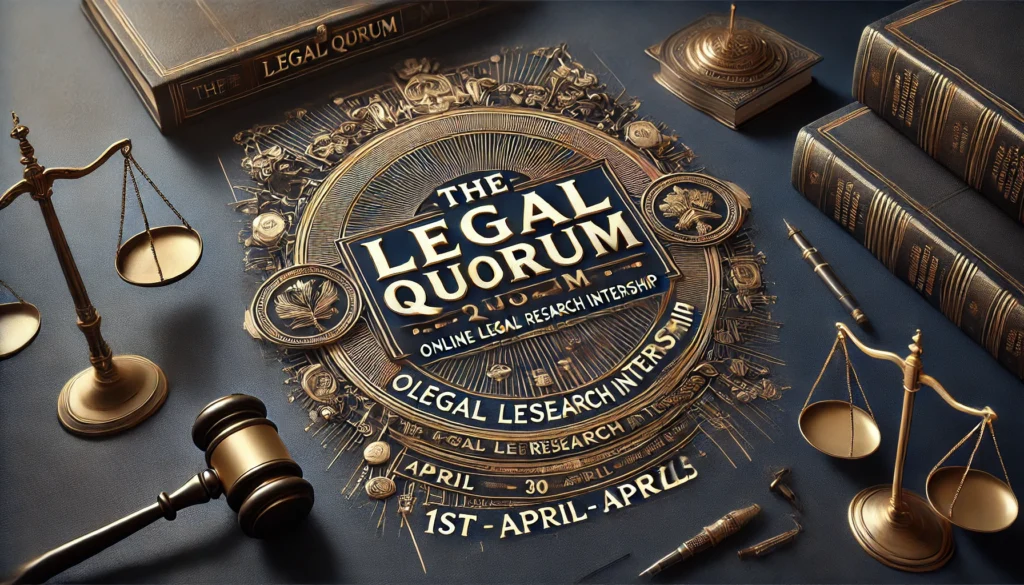Published On: November 6th 2025
Authored By: Nilisha Chatterjee
Symbiosis Law School Hyderabad
Brief Description of the Case:
In Miller v Miller[1]A short, childless marriage of less than three years involved a wealthy fund manager who had accumulated significant wealth before and during the marriage. Upon divorce, the wife sought maintenance, and the House of Lords held that the short duration of the marriage did not negate the paramount consideration of fairness in asset division. However, it recognized that non-matrimonial property or pre-acquired assets could justify a departure from equal sharing. Accordingly, the wife was awarded £5 million, reflecting a fair division of matrimonial property while acknowledging the husband’s pre-acquired wealth.
In McFarlane v McFarlane[2]A sixteen-year marriage with three children saw both spouses begin as professionals, but the wife gave up her legal career to focus on domestic and childcare duties, enabling the husband to achieve a lucrative partnership. After the divorce, the capital was insufficient for a clean break, though the husband had substantial income. The House of Lords held that fairness required not only meeting the wife’s needs but also compensating her for the long-term economic disadvantage from the marital decisions. She was therefore awarded substantial periodical payments for maintenance and compensation for her sacrificed career.
Historical Background and Current Practice:
Financial arrangements on divorce in England and Wales are governed by the Matrimonial Causes Act 1973[3], with §§23–24 enabling lump sums, property adjustments, and maintenance, and §25 requiring consideration of resources, needs, contributions, and children’s welfare[4]. The 1984 Act added §25(2)(g) on conduct and §25A on the clean break principle, while the 1996 Act allowed capitalizing maintenance through lump sums. In contrast, Scotland’s 1985 Act limits division to matrimonial property acquired during marriage, excluding non-matrimonial assets and restricting judicial discretion.
Until the early 21st century, judicial remedies under these sections were mainly guided by White v. White[5], Miller v. Miller,[6] and McFarlane v. McFarlane[7]. Courts now assess matrimonial relief on three principles: needs, compensation, and sharing. The default is equal division of matrimonial assets, with departures justified by factors like property source, marriage duration, or other equitable considerations. Periodical payments remain available, though the clean break principle encourages finality where practicable. Non-matrimonial property is protected, especially in short marriages, but may be used to meet needs. Thus, the law has developed into a discretionary, fairness-oriented regime shaped by judicial principles, distinguishing it from Scotland’s codified model.[8]
Identification of Legal Dilemma / Practical Complexity:
In the aforementioned case, the judiciary was presented with one of the most complex questions in family law- “How to Achieve Fairness in the Division of Property and Financial Arrangement subsequent to a Divorce?” At the center of these disputes lies the transient notion of fairness. Although the Matrimonial Causes Act, 1973[9], provides only statutory guidelines, and the courts are tasked with dealing with the conflicting principles of needs, compensation, and sharing. This causes practical complexities as judges must balance certainty and predictability with the flexibility necessary to do justice in such cases.
The key issue is the valuation of non-financial contributions against financial ones. While the law rejects discrimination between the breadwinner and the homemaker by recognizing childcare and domestic work as equally valuable, quantifying such contributions remains difficult[10]. In the McFarlane case[11]The wife faced economic disadvantage after sacrificing her career to raise children, raising the question of whether she should be compensated for intangible and future losses. As her claim went beyond maintenance to include missed opportunities, a conflict emerged between the principles of sharing and needs, reflecting marriage as an equal partnership.
A further complexity arises in distinguishing between short and long marriages. In the Miller case, despite the marriage lasting less than three years, the wife was awarded £5 million. This raised the issue of whether the principle of sharing should apply equally regardless of duration, since even a short marriage is a partnership of equals. However, fairness is challenged when one spouse gains a large share of wealth acquired before marriage, creating tension between equality of partnership and proportionality of entitlement[12].
Another unresolved question is determining the boundary between matrimonial and non-matrimonial property. Generally, assets acquired during marriage are viewed as the fruits of a joint endeavor, so the question arises is “Whether such assets should be excluded in whole or in part from the Marital Pot?[13]The courts in Miller had to strike a balance between individual property rights and the transformative effect of marriage on financial expectations.
The “Clean Break” Principle conflicts with the “Compensation” Principle. In McFarlane, the court had to decide whether periodic payments could serve as maintenance and redress for economic disparities caused by marital choices. While the Clean Break Principle promotes independence and closure, ongoing payments recognize that fairness may require continuing obligations. This reflects the tension between social policy favouring finality and the moral duty to prevent long-term injustice[14].
To summarize everything stated so far, these issues highlight the challenges of applying a wide concept of fairness to diverse situations of the breakdown of marriage. This shows that family law requires that the principle of fairness is a balancing act between the laws and the competing legal principles.
Identification of Issues:
Miller v. Miller:
- Whether the Trial Judge and the Court of Appeals erred in law in their treatment of (a) the short duration of the marriage, and (b) the husband’s non-matrimonial or premarital property, namely the New Star shares, when applying the “yardstick of equality” established in White v. White?
- Whether the Appellant’s wife’s entitlement could be curtailed by reference to the to husband’s conduct, which did not meet the statutory threshold of conduct that it would be inequitable to disregard under Section 25(2)(g) of the Matrimonial Causes Act, 1973?
McFarlane v. McFarlane:
- Whether periodical payments, including joint-lives orders, may properly encompass compensation in addition to maintenance, and how these accord with the clean break duty under section 25A of the Matrimonial Causes Act 1973?
- Whether a substantial joint-lives maintenance order, extending beyond mere needs, should be confined to a fixed term as ordered by the Court of Appeal, or maintained as a joint-lives order in light of the compensatory principle?
Legal Reasoning of Issues and Conflicts of Law:
Miller v. Miller
In Miller v. Miller, McFarlane v. McFarlane[15], The House of Lords reaffirmed fairness in ancillary relief through needs, compensation, and sharing. In Miller, even after a short marriage, equality applied but adjusted for duration and asset source; non-matrimonial property could justify departure. Only conduct meeting §25(2)(g)’s threshold could affect awards. The husband offered £1.3m, while the wife, citing White v. White[16] claimed £7.2m based on marital assets.
On appeal, the husband challenged the £5m award as beyond §25, but while the Court of Appeal upheld it, the House of Lords clarified that fairness—based on needs, compensation, and sharing—requires equal division of matrimonial assets, with non-matrimonial property usually excluded[17], especially in short marriages. Lord Nicholls stressed the home is joint, while other assets may be excluded[18]. The needs principle ensures housing and income, but may slip into lifestyle maintenance[19]. while the underused compensation principle leaves spouses with career sacrifices inadequately protected[20].
- 25(2)(g) limits conduct to cases where ignoring it would be inequitable; thus, the husband’s infidelity, though reprehensible, did not meet this threshold and was rightly excluded by Justice Singer[21]. The Court of Appeal, however, indirectly revived conduct considerations through the “contribution” lens[22]. Risking a return to fault-based analysis, which conflicted with the statutory aim of keeping financial provision free from blame.[23]
The House of Lords rejected considering ordinary marital misconduct in ancillary relief, allowing it only when exceptional under §25(2)(g). Lord Nicholls held that fairness is not about punishing moral faults, as this undermines no-fault divorce. The Court of Appeal erred by allowing conduct to influence entitlement, and the ruling reaffirmed the statutory threshold and doctrinal consistency[24].
McFarlane v. McFarlane
The decision in McFarlane[25] the House of Lords held that periodical payments can serve a compensatory role, not just meet daily needs[26], especially where one spouse suffers a lasting economic disadvantage from career sacrifice[27]. The wife’s support of the family and the husband’s advancement justified substantial continuing maintenance[28]. While §25A encourages a “clean break,” the court allowed joint lives maintenance, criticized as fostering dependency, yet defended as fair since §25A requires a clean break only where practicable[29]. The ruling, though stretching §25A, ensured substantive fairness by preventing one spouse from retaining benefits gained through the other’s sacrifice[30].
In McFarlane, the Court of Appeal limited the wife’s award with a fixed-term order to support the clean break principle, but the House of Lords restored a joint-lives order, as career disadvantage was permanent[31]. Unlike needs-based maintenance, compensatory maintenance may justifiably persist[32]Though exceptional, it was warranted for fairness here. Critics argue this blurs support and property adjustment, risks dependency, undermines certainty, and complicates recognition abroad, where a clean break is preferred[33].
Case Resolution and Possible Solution:
Miller v. Miller; McFarlane v. McFarlane clarified divorce relief under the Matrimonial Causes Act 1973 through the principles of needs, compensation, and sharing. The £5 million award in Miller was seen as disproportionate in a short, childless marriage, while McFarlane was deemed fairer as the wife sacrificed her legal career for family support and received compensatory income. The rulings highlighted both progress in valuing non-monetary contributions and ongoing ambiguity in applying equality. The Possible Solutions with regard to the law are given as follows: –
- Clear and Specific Guidelines: To modernize the Matrimonial Causes Act, 1973, the Parliament should define a hierarchy of criteria that courts must consider, making it clear when needs, compensation, and sharing principles hold supremacy. By doing this, court discretion will be curbed, uncertainty will be decreased, and settlements would resemble child support standards in terms of formula-based systems. The fact that financial relief is founded on legal certainty rather than judicial philosophy would further calm plaintiffs.[34]
- Differentiated Approach to Short Marriages: There should be a legal distinction between short-term, childless marriages and long-term family commitments. in general words, unless there are obvious sacrifices (Such as Moving, Changing Careers, or polling assets), cash compensation should mostly be limited to demonstrated necessities. In cases where no lasting partnership was established, this would shield wealthy individuals from undue exposure, avoid windfall-like outcomes, and restore proportionality.[35]
- Acknowledgement of Pre and Post nuptial Agreements: Nuptial agreements should have binding force, provided that they are protected by safeguards such as impartial legal counsel, lack of pressure, and equity when it comes to enforcement. In addition to respecting autonomy, this would lessen litigation and enable couples to control expectations before marriage.[36] Additionally, it would put England and Wales in line with other international countries where these kinds of agreements are legally binding and widespread.[37]
- Reform of “Clean-Break” Theory: The law should be amended to provide structured compensation after a remarriage, especially in cases when the underprivileged spouse maintains long-term losses as a result of sacrifices made throughout the marriage. This would avoid accounting for the ongoing financial realities of interrupted careers and caring obligations.[38]
Conclusion:
In Miller v. Miller; McFarlane v. McFarlane, the House of Lords redefined fairness in ancillary relief under the Matrimonial Causes Act 1973 through the principles of needs, compensation, and sharing, affirming marriage as a partnership of equals. Miller stressed fairness over strict 50:50 division, especially with non-matrimonial assets, while McFarlane applied the compensatory principle with substantial payments for career sacrifice. The rulings balanced clean break against justice, elevated non-monetary contributions to equal status, advanced gender equality, and confirmed that fairness in matrimonial finance is fact-specific, requiring proportionality and recognition of sacrifice.
References:
[1] Miller v. Miller, [2006] UKHL 24, [2006] 2 A.C. 618 (appeal taken from Eng.).
[2] McFarlane v. McFarlane, [2006] UKHL 24, [2006] 2 A.C. 618 (appeal taken from Eng.).
[3] Matrimonial Causes Act 1973, c. 18, § 25A (UK).
[4] Id. § 25(2).
[5] White v. White, [2001] 1 A.C. 596 (HL) (appeal taken from Eng.).
[6] Miller v. Miller, [2006] UKHL 24, [2006] 2 A.C. 618 (appeal taken from Eng.).
[7] McFarlane v. McFarlane, [2006] UKHL 24, [2006] 2 A.C. 618 (appeal taken from Eng.).
[8] Family Law (Scotland) Act 1985, c. 37, § 10 (Scot.).
[9] Matrimonial Causes Act 1973, c. 18 (UK).
[10] Scott J. Levine, Non-Financial Contributions in Divorce Property Division, Scott J. Levine Law (Apr. 23, 2024) https://www.sjlevine.com/blog/2024/04/non-financial-contributions-in-divorce-property-division/
[11] Miller v. Miller, [2004] EWCA (Civ) 872.
[12] Mary Welstead, Case Commentary, Miller v. Miller; McFarlane v. McFarlane [2004] UKHL 24: Fairness Remains an Elusive Concept—Financial Provision on Divorce, 18 Denning L.J. 209 (2006).
[13] Standish v. Standish, [2025] UKSC 26.
[14] Rafi Weiner, Spousal Maintenance After Divorce and the “Clean Break” Principle, Ashersons Attorneys (July 5, 2021), https://www.ashersons.co.za/articles/spousal-maintenance-after-divorce-and-the-clean-break-principle/.
[15] Miller v. Miller; McFarlane v. McFarlane, [2006] UKHL 24, [2006] 2 A.C. 618 (H.L.).
[16] White v. White, [2006], 1 FLR 151.
[17] Brent Molyneux QC, Short Marriages – Short, Sharp, and Occasionally Shocking (29 Bedford Row, May 2018) (unpublished manuscript) (on file with author) https://docs.whitepaper.co.uk/5b056ed49896f-short-marriages-brent-molyneux-qc-29-bedford-row.pdf.
[18] Matrimonial Causes Act 1973, c. 18, § 25 (UK).
[19] Family Justice Council, Guidance on “Financial Needs” on Divorce 17 (June 2016), https://www.judiciary.uk/wp-content/uploads/2013/04/guidance-on-financial-needs-on-divorce-june-2016-2.pdf.
[20] B v S (Financial Remedy: Marital Property Regime), [2012] EWHC 265 Fam; see also: SA v PA, [2014] EWHC 392 (Fam).
[21] Brent Molyneux QC, Short Marriages – Short, Sharp, and Occasionally Shocking (29 Bedford Row, May 2018) (unpublished manuscript) (on file with author) https://docs.whitepaper.co.uk/5b056ed49896f-short-marriages-brent-molyneux-qc-29-bedford-row.pdf.
[22] J Miles, ’Charman v Charman (No 4) – making sense of need, compensation and equal sharing after Miller/McFarlane’, [2008] CFLQ 378, 10.
[23] Sonia Harris-Short, George Miles & Rob George, Family Law: Text, Cases, and Materials ch. 7 update (Oct. 2017), http://fdslive.oup.com/www.oup.com/orc/resources/law/family/familytcm3e/resources/updates/harris_miles_update1017_ch07.pdf.
[24] Anna Heenan, Causal and Temporal Connections in Financial Remedy Cases: The Meaning of Marriage, 30 Child & Fam. L.Q. 175 (2018) https://ore.exeter.ac.uk/repository/bitstream/handle/10871/32192/Causal%20and%20temporal%20links%20-%20uncorrupted%20accepted%20version.pdf?isAllowed=y&sequence.
[25] McFarlane v. McFarlane, [2006] UKHL 24, [2006] 2 A.C. 618 (appeal taken from Eng.).
[26] Brent Molyneux QC, Short Marriages – Short, Sharp, and Occasionally Shocking (29 Bedford Row, May 2018) (unpublished manuscript) (on file with author) https://docs.whitepaper.co.uk/5b056ed49896f-short-marriages-brent-molyneux-qc-29-bedford-row.pdf.
[27] SS v NS (Spousal Maintenance), [2015] 2 FLR 1124, FD.
[28] Brent Molyneux QC, Short Marriages – Short, Sharp, and Occasionally Shocking (29 Bedford Row, May 2018) (unpublished manuscript) (on file with author) https://docs.whitepaper.co.uk/5b056ed49896f-short-marriages-brent-molyneux-qc-29-bedford-row.pdf.
[29] Wyatt v Vince, [2015] UKSC 14 [32]; Work v Gray, [2017] EWCA Civ 270.
[30] G v G (Financial Remedies: Short Marriage: Trust Assets), [2012] 2 FLR 48, FD; AB v FC, [2016] EWHC 3285 (Fam); Murphy v Murphy, [2014] EWHC 2263 (Fam); G v G (Financial Remedies: Short Marriage; Trust Assets), [2012] 2 FLR 48, FD.
[31] Anna Heenan, Causal and Temporal Connections in Financial Remedy Cases: The Meaning of Marriage, 30 Child & Fam. L.Q. 175 (2018) https://ore.exeter.ac.uk/repository/bitstream/handle/10871/32192/Causal%20and%20temporal%20links%20-%20uncorrupted%20accepted%20version.pdf?isAllowed=y&sequence.
[32] Brent Molyneux QC, Short Marriages – Short, Sharp, and Occasionally Shocking (29 Bedford Row, May 2018) (unpublished manuscript) (on file with author) https://docs.whitepaper.co.uk/5b056ed49896f-short-marriages-brent-molyneux-qc-29-bedford-row.pdf.
[33] Miller v. Miller; McFarlane v. McFarlane, [2006] UKHL 24 (May 24, 2006), Miller (Appellant) v. Miller (Respondent); McFarlane (Appellant) v. McFarlane (Respondent), https://publications.parliament.uk/pa/ld200506/ldjudgmt/jd060524/mill-5.htm.
[34] Mary Welstead, Fairness Remains an Elusive Concept – Financial Provision on Divorce: Case Commentary on Miller v. Miller; McFarlane v. McFarlane, (2006) UKHL 24, 18 Denning L.J. 209 (2006).
[35] Mary Welstead, Fairness Remains an Elusive Concept – Financial Provision on Divorce: Case Commentary on Miller v. Miller; McFarlane v. McFarlane, (2006) UKHL 24, 18 Denning L.J. 209 (2006).
[36] Radmacher v. Granatino, (2010) UKSC 42.
[37] White v. White, (2001) 1 A.C. 596.
[38] Miller v. Miller; McFarlane v. McFarlane, (2006) UKHL 24.




